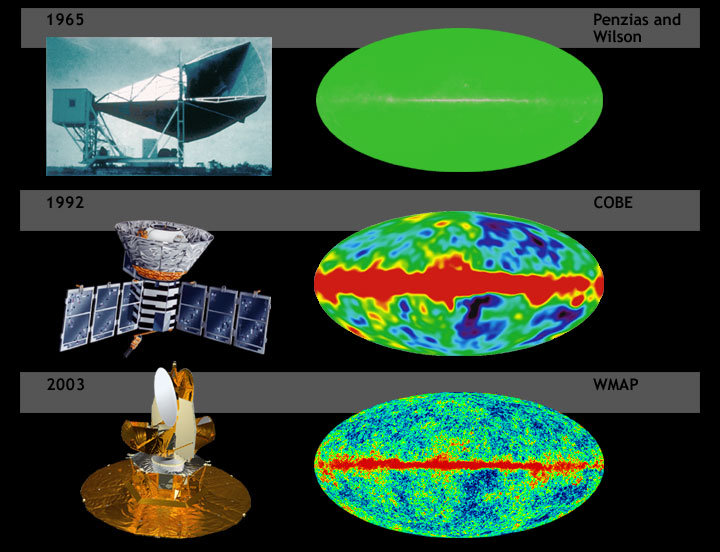BigBangNoise
Autor:
NASA
Krótki link:
źródło:
Wymiary:
720 x 552 Pixel (105698 Bytes)
Opis:
Diagram of the history of the Cosmic Microwave Background Radiation (CMBR), showing the improvement of CMBR resolution over the years. The CMBR, a faint microwave radiation permeating all space that can be detected by radio telescopes, is remnant radiation left from the Big Bang, and one of the few sources of information on conditions in the early universe.
- (top left) Penzias and Wilson microwave horn antenna at Bell Labs, Murray Hill, NJ - 1965 Penzias and Wilson discovered the CMBR from the Big Bang and were awarded the 1978 Nobel Prize in physics for their work.
- (top right) Simulation of the sky viewed by Penzias and Wilson's microwave receiver - 1965
- (middle left) COBE spacecraft (painting) - The Cosmic Background Explorer (COBE), launched in 1989, first discovered patterns in the CMBR, and Mather and Smoot were awarded the 2006 Nobel Prize for that work.
- (middle right) COBE's map of early universe- 1992
- (bottom left) WMAP spacecraft (computer rendering) - The Wilkinson Microwave Anisotropy Probe (WMAP), launched in 2001 and active until 2010, mapped the patterns with much higher resolution to unveil new information about the history and fate of the universe. Bennet, Page, and Spergel won the 2010 Shaw Prize for their WMAP work.
- (bottom right) Simulated WMAP view of early universe
Licencja:
Public domain
Więcej informacji o licencji można znaleźć tutaj. Ostatnia aktualizacja: Tue, 20 Dec 2022 13:22:23 GMT
